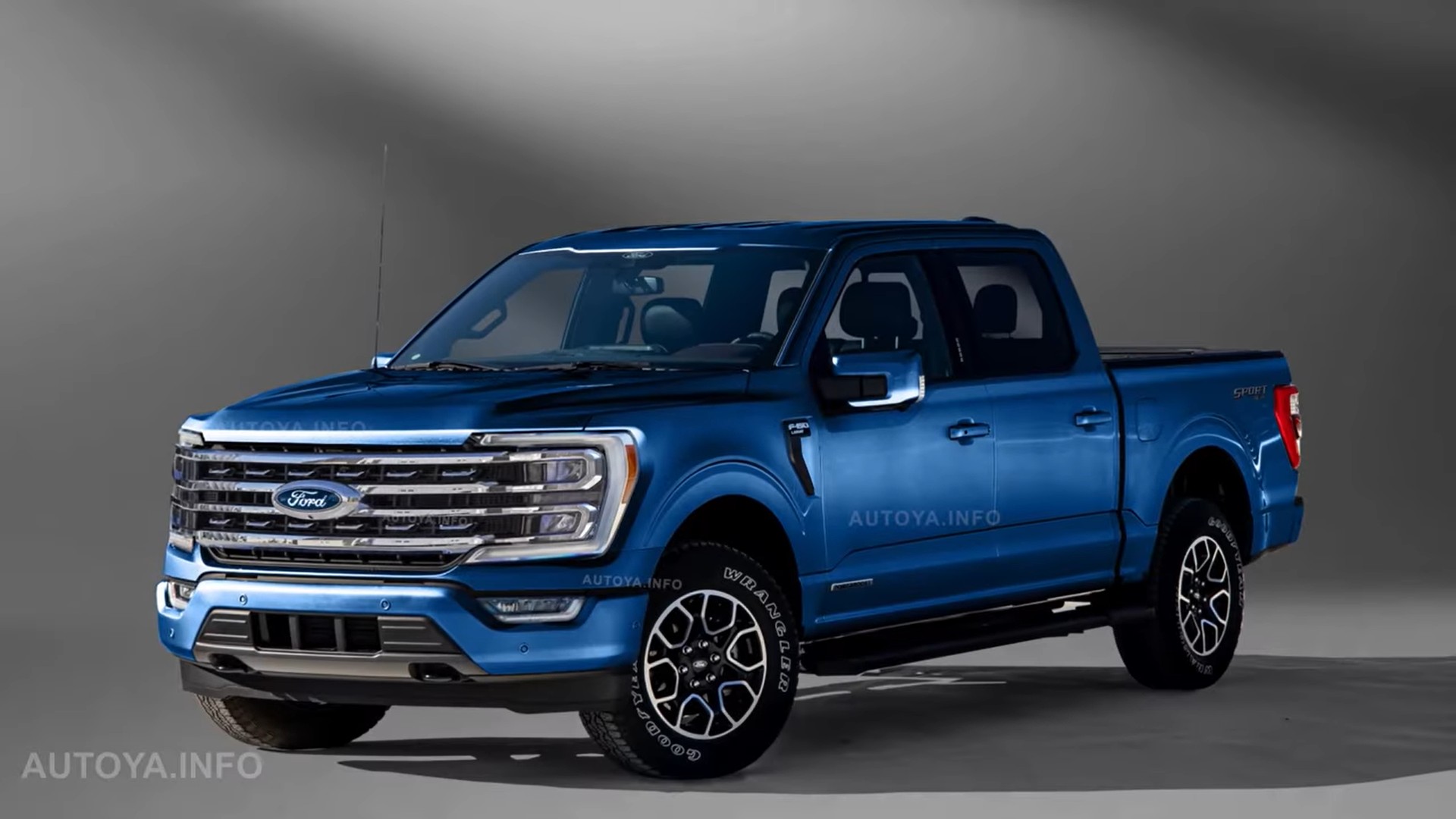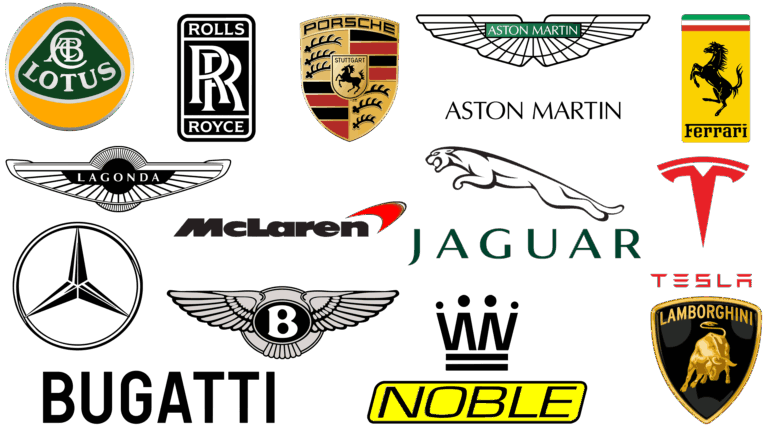Ford Car Brands: A Comprehensive Guide to an Automotive Giant’s Legacy and Future
Ford Car Brands: A Comprehensive Guide to an Automotive Giant’s Legacy and Future cars.truckstrend.com
Introduction: Decoding the Ford Brand Ecosystem
When one thinks of "Ford Car Brands," the immediate image that often comes to mind is simply "Ford" itself. Unlike many global automotive conglomerates that operate a vast array of distinct brands under a single corporate umbrella (think Volkswagen Group with Audi, Porsche, Skoda, etc., or Stellantis with Chrysler, Dodge, Jeep, Peugeot, Fiat, etc.), Ford Motor Company has largely cultivated a unique brand strategy. For most of its history, Ford has primarily focused its vast global operations and innovative spirit on its eponymous brand, alongside its long-standing luxury division, Lincoln.
Ford Car Brands: A Comprehensive Guide to an Automotive Giant’s Legacy and Future
However, to truly understand "Ford Car Brands" in its comprehensive sense, one must delve deeper than just its current core offerings. Ford’s journey through the automotive landscape has included strategic acquisitions and divestitures, a period where it indeed owned and managed a significant portfolio of diverse car brands. This article will explore the evolution of Ford’s brand strategy, from its steadfast focus on the Ford marque to its ambitious foray into multi-brand ownership and its subsequent return to a more streamlined, core-centric approach. We will examine the key brands that have shaped Ford’s past and present, offering insights into its enduring legacy, its current market position, and its visionary path forward.
The Core Brand: Ford Motor Company’s Unwavering Identity
At its heart, Ford Motor Company is synonymous with the Ford brand itself. Founded by Henry Ford in 1903, the company pioneered mass production and democratized vehicle ownership, fundamentally shaping modern society. This core brand has been the constant through over a century of innovation, global expansion, and market shifts.
Ford’s decision to predominantly market vehicles under its own name, rather than acquiring numerous smaller manufacturers to create a vast brand conglomerate, stems from a deep-rooted belief in the strength and recognition of the Ford badge. This strategy allows for concentrated marketing efforts, economies of scale in manufacturing, and a unified research and development focus.
Today, the Ford brand encompasses an incredibly diverse and globally recognized product line, reflecting consumer demands and technological advancements:
- Trucks: The undisputed champions of Ford’s lineup are its trucks, particularly the F-Series, which has been America’s best-selling truck for over 40 consecutive years and the best-selling vehicle for decades. The Ranger and Maverick further bolster Ford’s pickup offerings, catering to different segments with their capabilities and fuel efficiency. This segment is crucial for Ford’s profitability and brand image of rugged capability.
- SUVs: Recognizing the global shift towards utility vehicles, Ford has a robust SUV portfolio. From compact options like the Escape and Bronco Sport to mid-size family haulers like the Edge and Explorer, and full-size giants like the Expedition, Ford offers an SUV for nearly every need. The reintroduction of the iconic Bronco nameplate has also reignited enthusiasm for off-road adventures, while the all-electric Mustang Mach-E represents a bold step into the future of electric SUVs, blending heritage with innovation.
- Cars: While Ford has largely scaled back its traditional sedan offerings in North America (e.g., Fusion, Focus, Fiesta), it maintains a strong presence with the legendary Mustang, a global icon of performance and freedom. In international markets, Ford continues to offer a wider range of passenger cars, adapted to local preferences.
- Commercial Vehicles: Ford Pro, the company’s dedicated commercial vehicle and services business, highlights the importance of vehicles like the Transit vans and chassis cabs. These workhorses are vital for businesses worldwide, underpinning Ford’s role in the global economy beyond passenger vehicles.

Ford’s future under its core brand is heavily invested in electrification (with the "Model e" division), software-defined vehicles, and connectivity. The brand is committed to leading the charge in sustainable transportation while maintaining its reputation for durability, capability, and value.
Ford’s Historical Brand Portfolio: A Journey Through Acquisitions and Divestitures
While the Ford brand remains the cornerstone, a comprehensive understanding of "Ford Car Brands" necessitates a look back at a period where Ford strategically expanded its portfolio through acquisitions. This era, particularly the late 20th and early 21st centuries, saw Ford experimenting with a multi-brand strategy, most notably through its Premier Automotive Group (PAG).
The Premier Automotive Group (PAG) Experiment
Formed in 1999, PAG was Ford’s ambitious attempt to compete directly in the luxury and performance segments by consolidating its existing and newly acquired premium brands. The idea was to leverage shared platforms, components, and management expertise while maintaining distinct brand identities.
- Aston Martin (Owned 1987-2007): Ford initially acquired a minority stake in the prestigious British sports car maker in 1987, eventually taking full control. Under Ford’s stewardship, Aston Martin saw significant investment and modernization, leading to the development of successful models like the DB7 and Vanquish. Ford eventually sold most of its stake in 2007 to a consortium, though it maintained some technical links for a period.
- Jaguar (Owned 1989-2008): Ford acquired the iconic British luxury and sports car brand in 1989. While Ford invested heavily in modernizing Jaguar’s manufacturing processes and product development, helping to improve quality and broaden its appeal, the brand struggled to achieve consistent profitability.
- Land Rover (Owned 2000-2008): Following its acquisition from BMW, Land Rover thrived under Ford’s ownership. Ford’s investment helped expand the brand’s global reach and modernize its rugged SUV lineup.
- Volvo Cars (Owned 1999-2010): Known for its unwavering commitment to safety and distinctive Scandinavian design, Volvo Cars was a key component of PAG. Ford leveraged Volvo’s safety research and engineering prowess, and Volvo benefited from Ford’s global scale. However, the financial crisis of 2008 prompted Ford to divest, selling Volvo to China’s Geely Holding in 2010.
The sale of Aston Martin, Jaguar, Land Rover, and Volvo marked a significant shift in Ford’s strategy, moving away from luxury brand diversification to a more focused approach on its core Ford and Lincoln brands, especially in the wake of the 2008 financial crisis.
Other Notable Brands and Alliances
Beyond PAG, Ford’s brand history includes other significant entities:
- Lincoln: Ford’s dedicated luxury brand, established in 1917 and acquired by Ford in 1922. Unlike the PAG brands, Lincoln has remained a wholly owned and integral part of Ford Motor Company. It serves as Ford’s premium offering, known for its "Quiet Flight" design philosophy, comfortable interiors, and advanced technology. Current models like the Nautilus, Aviator, and Navigator compete in the lucrative luxury SUV segment, showcasing a distinct identity from their Ford counterparts.
- Mercury (Defunct): Founded in 1938, Mercury was Ford’s mid-range brand, positioned between the mainstream Ford and the luxury Lincoln. It offered slightly more upscale versions of Ford models, targeting consumers seeking something a bit more refined without the full luxury price tag. Mercury served its purpose for decades but gradually lost its distinctiveness. Facing declining sales and a need to streamline operations, Ford discontinued the Mercury brand in 2011, marking the end of an era.
- Mazda (Partial Ownership & Alliance): For many years, Ford held a significant stake in Japanese automaker Mazda, forming a close strategic alliance. This partnership involved extensive platform sharing, joint ventures, and technology exchange, benefiting both companies. While Ford divested its remaining shares in Mazda by 2015, the historical collaboration left a lasting impact on vehicle development for both brands.
- Edsel (Defunct): A classic case study in marketing failure, the Edsel was a standalone brand launched by Ford in 1957. Despite significant investment, it failed to resonate with consumers due to a combination of controversial styling, poor timing (recession), and internal missteps. It was discontinued in 1959, serving as a cautionary tale in brand management.
Key Information & Benefits of Ford’s Brand Strategy
Ford’s brand evolution offers valuable lessons in corporate strategy.
Benefits of a Focused Brand Strategy (Ford & Lincoln)
- Streamlined Operations: Concentrating resources on two primary brands (Ford and Lincoln) reduces complexity in manufacturing, supply chains, marketing, and distribution.
- Cost Efficiency: Economies of scale are maximized when developing platforms and components that serve a high volume of vehicles under fewer brand banners.
- Clear Brand Identity: Ford and Lincoln each have distinct, well-understood brand propositions, making it easier for consumers to differentiate and connect with their offerings.
- Concentrated R&D: Innovation efforts can be more effectively channeled into core technologies that benefit the entire product lineup, such as electrification, connectivity, and autonomous driving.
Benefits of Past Multi-Brand Strategy (PAG Era)
- Market Diversification: Owning luxury brands allowed Ford to tap into higher-margin segments and diversify its revenue streams, reducing reliance on mainstream sales.
- Brand Prestige Acquisition: Acquiring heritage brands like Aston Martin and Jaguar instantly elevated Ford’s overall corporate image and access to different consumer demographics.
- Technology & Platform Sharing: Ideally, technology and platform sharing across brands could lead to efficiencies and improved products, though this was often challenging in practice.
Challenges of Multi-Brand Ownership
- Brand Dilution & Conflicting Identities: Maintaining distinct identities for multiple brands, especially when sharing components, can be difficult. Customers may perceive them as too similar, or the unique appeal of a luxury brand might be diluted by association with a mass-market parent.
- Management Complexity: Overseeing disparate brands with different cultures, product cycles, and market positioning adds significant management overhead.
- Financial Strain: During economic downturns, supporting multiple brands, especially those in niche or luxury segments, can become a significant financial burden, as evidenced by the 2008 crisis.
- Maintaining Distinctiveness: While platform sharing offers cost benefits, it can lead to "badge engineering" where vehicles from different brands feel too similar, eroding their unique value propositions.
Understanding Ford’s Brand Evolution and Future Outlook
Ford’s brand strategy has undergone a significant transformation. From a period of ambitious diversification in the late 20th century, the company has consciously returned to a more focused approach, prioritizing the strength and innovation of its core Ford brand, complemented by its premium Lincoln division.
This shift is not merely about trimming the fat; it’s a strategic pivot towards agility and future relevance. Ford is currently restructuring into distinct business units: Ford Blue (focused on traditional internal combustion engine vehicles and hybrids), Ford Model e (dedicated to electric vehicles, software, and connected services), and Ford Pro (commercial vehicles and services). This structure allows for specialized focus while leveraging shared resources.
Lincoln continues to play a vital role as Ford’s premium offering, emphasizing sophisticated design, serene interiors, and advanced technology. Its strategy is increasingly focused on electric propulsion and personalized luxury experiences.
Globally, Ford adapts its brand strategy to local market conditions. While the core Ford brand is universal, regional joint ventures (e.g., in China) and manufacturing hubs (e.g., Ford Otosan in Turkey) reflect tailored approaches to production and distribution, ensuring the Ford brand remains competitive and relevant worldwide.
Practical Advice and Actionable Insights
For consumers and industry observers alike, understanding Ford’s brand strategy provides valuable insights:
- For Consumers: When considering a Ford vehicle, recognize that you are buying into a brand with a strong legacy of reliability, capability, and innovation. Explore the FordPass ecosystem for connectivity and the BlueOval Charge Network for EV charging solutions. If seeking a more premium experience, Lincoln offers distinct luxury without entirely leaving the Ford family’s engineering prowess. Research specific models to match your needs, whether it’s the raw power of an F-150, the family versatility of an Explorer, or the pioneering spirit of a Mustang Mach-E.
- For Industry Observers: Ford’s journey is a compelling case study in corporate adaptation. Its move away from a multi-brand strategy underscores the challenges of managing diverse portfolios and the benefits of focused investment. Pay close attention to Ford’s progress in electrification and software, as these areas are critical to its long-term success and will shape the future identity of the Ford brand. The success of Lincoln’s "Quiet Flight" strategy will also be a key indicator of Ford’s ability to maintain a strong presence in the luxury segment without relying on external acquisitions.
Price Table: Representative Ford & Lincoln Models
Understanding the breadth of Ford’s current offerings also involves appreciating their market positioning, often reflected in their price. Below is a representative table of starting MSRPs for some key Ford and Lincoln models (prices are approximate and subject to change based on trim, options, and market conditions).
| Model | Type | Starting MSRP (Approx. USD) | Key Feature/Note |
|---|---|---|---|
| Ford F-150 | Full-Size Pickup | $36,570 | America’s best-selling vehicle; diverse powertrains. |
| Ford Explorer | Mid-Size SUV | $36,860 | Popular family SUV with seating for up to 7. |
| Ford Mustang Mach-E | All-Electric SUV | $42,995 | Iconic nameplate re-imagined as an EV. |
| Ford Bronco | Off-Road SUV | $39,630 | Rugged, capable, and highly customizable. |
| Ford Transit | Commercial Van | $45,860 | Versatile workhorse for businesses. |
| Lincoln Corsair | Compact Luxury SUV | $39,245 | Stylish entry-level luxury with advanced tech. |
| Lincoln Aviator | Mid-Size Luxury SUV | $53,365 | Elegant design, powerful performance, 3-row seating. |
| Lincoln Navigator | Full-Size Luxury SUV | $84,000 | Flagship SUV, ultimate luxury and spaciousness. |
Note: Prices are for base models and do not include destination charges, taxes, or options. EV prices may be eligible for tax credits.
Frequently Asked Questions (FAQ) about Ford Car Brands
Q1: Is Lincoln still owned by Ford?
A1: Yes, Lincoln has been Ford Motor Company’s luxury division since 1922 and remains a wholly owned and integral part of the company today.
Q2: Does Ford own Jaguar or Land Rover anymore?
A2: No, Ford sold Jaguar and Land Rover to Tata Motors of India in 2008 as part of its strategic restructuring following the 2008 financial crisis.
Q3: Why did Ford sell off its luxury brands like Volvo and Aston Martin?
A3: Ford divested these brands primarily to streamline its operations, reduce debt, and focus resources on its core Ford and Lincoln brands, especially during and after the challenging economic climate of the late 2000s.
Q4: What is Ford’s main brand strategy today?
A4: Ford’s current strategy focuses on strengthening its core Ford brand globally, with a strong emphasis on electrification (Model e), commercial vehicles (Ford Pro), and software-defined vehicles. Lincoln continues to serve as its premium luxury brand.
Q5: Were Ford and Mazda ever connected?
A5: Yes, Ford held a significant ownership stake in Mazda for many years, leading to extensive collaboration, platform sharing, and joint ventures. While Ford no longer owns shares in Mazda, the historical ties and shared engineering from that period are notable.
Q6: What was the Mercury brand?
A6: Mercury was a brand owned by Ford Motor Company from 1938 to 2011. It was positioned as a mid-range offering, slotting between the mainstream Ford and the luxury Lincoln brands, often providing slightly more upscale versions of Ford models. It was discontinued due to declining sales and a strategic decision to simplify Ford’s brand portfolio.
Concluding Summary: A Legacy of Adaptation
The narrative of "Ford Car Brands" is a fascinating journey through the history of one of the world’s most influential companies. While Ford is predominantly known for its singular, powerful Ford brand, its strategic forays into owning and managing a diverse portfolio of luxury marques like Aston Martin, Jaguar, Land Rover, and Volvo highlight a period of ambitious expansion. The subsequent divestiture of these brands underscores Ford’s adaptability and willingness to pivot its strategy in response to market dynamics and economic realities.
Today, Ford’s brand identity is clearer than ever: a global leader focused on innovation, particularly in electrification and connectivity, with its robust Ford brand and refined Lincoln luxury division leading the charge. Ford’s legacy is not just about the vehicles it produces, but about its enduring ability to evolve, learn from its past, and constantly reinvent itself for the future of mobility. The company’s journey through various brand strategies serves as a testament to its resilience and its unwavering commitment to shaping the way the world moves.




